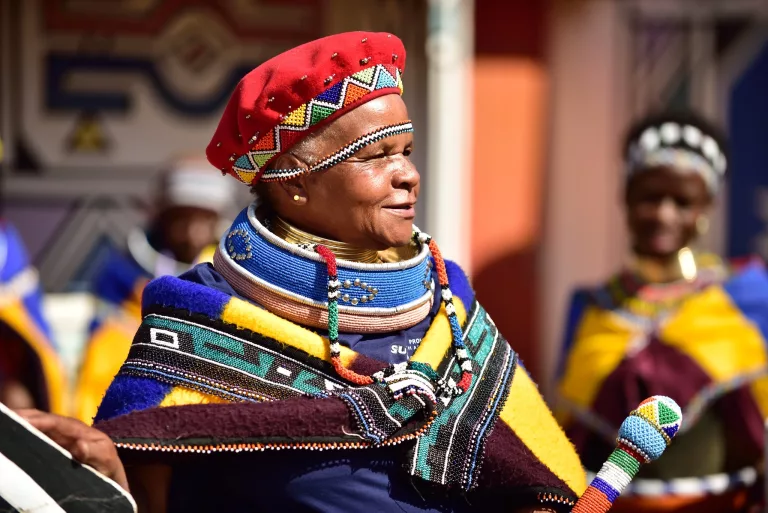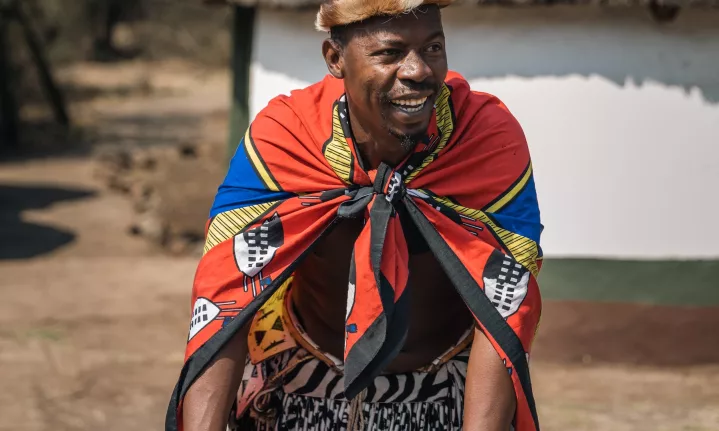The 6-Minute Rule for South African Culture Today
Table of ContentsThe Buzz on South African Culture Today4 Easy Facts About South African Culture Today ExplainedFacts About South African Culture Today RevealedExamine This Report about South African Culture TodayThe 25-Second Trick For South African Culture TodaySouth African Culture Today - An Overview
This adheres to with vocal singing and drum beating. The bride-to-be and groom after that meet with the senior citizens and talk concerning the importance of their union. An issue of relevance in Zambian villages is the passing away of liked ones. All participants of the town placed cash, time and effort together for the interment of the deceased.During the mourning period; males remain outside your house and the women stay inside your house of the deceased. After speaking about the dead, the town strolls to the area of funeral to claim their last bye-byes. Music and dancing is a really vital element of the Zambian culture. The various tribal devices have their very own dancing kinds; nevertheless, makishi is typical amongst all tribes.
Getting The South African Culture Today To Work
When it comes to music, drums are utilized one of the most, with a variety of drumming ceremonies. In Zambia, majority of the people are Christian; Protestant and Roman Catholic. There are tiny teams of Muslims and Hindus, with the rest adhering to local native tribal beliefs.

South African heritage and culture is exceptionally diverse, and contains several different teams of individuals who each have their own customs and ideas. Having such a variety of people and cultures is what makes South Africa so special. In the real sense of the phrase, we are a rainbow nation.
South Africa has around three hundred thousand Portuguese people staying in it. Making it the 7th on the checklist of nations with one of the most Portuguese individuals in it beyond Portugal. Portuguese is not only a culture, yet it is likewise a language and a nationality. Portuguese people stem from the nation of Portugal in Europe, however, because of Portugal (like lots of other nations in Europe) checking out the world and conquering other nations throughout the 15th 20th centuries, South Africa has what we call Portuguese South African's living in it.
The Buzz on South African Culture Today
Among the noticeable attributes of the topography is a plateau that covers nearly two thirds of the center of the country. The plateau facility climbs towards the southeast, where it culminates in the Drakensberg array, part of a cliff that separates the plateau from the seaside locations. The Drakensburg includes Champagne Castle, the greatest optimal in the nation.
The area north of the Witwatersrand, called the bushveld, slopes downward from east to west toward the Limpopo River, which forms the worldwide boundary. The western area of the plateau, the middleveld, additionally comes down in the direction of the west and varies in elevation in between the highveld and bushveld. Between the Drakensburg and the eastern and southern coastline, the land descends to the sea.
Nearer the coastline there is a low-lying level called the eastern lowveld. Southwest of the plateau the nation comes to be gradually more arid, providing means to the hostile desert of the Great Karroo, approached the east by the lower, better sprinkled plateau of the Little Karroo. Dividing the dry southern interior from the sandy coastal of the southern coastline and West Cape is one more array, the Langeberg.
Indicators on South African Culture Today You Need To Know
The country's racially, ethnically, and politically split history has produced national and subnational icons that still operate as signs of the country, and others icons that are approved only by particular teams. The monuments to white settler occupation and political prominence, such as the Afrikaner Voortrekker ("leader") Monolith in Pretoria and the Rhodes Monolith recognizing the British colonial empire contractor and Cape prime priest Cecil Rhodes, continue to be sectarian icons.
The very first modern-day inhabitants were the San ("bushman") hunter-gatherers and the Khoi ("Hottentot") individuals, that herded livestock (South African culture today). The San might have been existing for hundreds of years and left evidence of their existence in thousands of old cave paints ("rock art"). Bantu-speaking clans that were the ancestors of the Nguni (today's amaZulu, amaXhosa, amaSwazi, and vaTsonga individuals) and Tswana-Sotho language groups (today's Batswana and Southern and Northern Basotho) moved down from east Africa as very early as the fifteenth century

The two former republics of the Orange Free State and Transvaal (South African Republic) were developed by Afrikaner settlers who beat and dispossessed the Basotho and Batswana. Lesotho would certainly have been by force incorporated into the Orange Free State without the extension of British security in 1869. The best unification of the nation resulted from the South African War (18991902) in between the British and the two Afrikaner republics, which lowered the nation to destroy at the beginning of the twentieth century.
Afrikaners traditionally considered themselves the only real South Africans and, while granting complete citizenship to all residents of European descent, rejected that standing to people of color until the democratic change of 1994. British South Africans preserve a sense of cultural and social connection to Great Britain without weakening their identity as South Africans.
The Single Strategy To Use For South African Culture Today
The variety and fragmentation within ethnic collections and the equilibrium of stress in between those groups during the twentieth century stopped interethnic civil dispute. While from this source intergroup tensions over resources, entitlements, and political supremacy stay, those conflicts are as likely to pit Zulu against Zulu as Zulu versus Xhosa or African against Afrikaner.
From colonial India, British merchants and managers brought the rounded metal ornamental roof coverings and slender shoelace work columns that still symbolize the verandas of homes arounds and cities throughout the country. Holy places contribute an essential building aspect also in the smallest communities. Along with the skyrocketing steeples and traditional stonework of Afrikaans Dutch Reformed churches, Anglican churches, synagogues, mosques, and Hindu temples give range to the religious building scene.

Butchering and the brewing of standard cereal beer are vital in safeguarding the participation and a good reputation of the ancestors that are taken into consideration the guardians of good luck, prosperity, and wellness. Indian areas keep their native culinary practices and use them on Islamic and Hindu ritual and ritualistic events. why not try this out Afrikaners and Coloured individuals collect at weekend breaks and special celebrations at multifamily bbqs called braais, where community bonds are strengthened.
Because this was the main financial venture of both black Africans and white homesteaders, problem between those groups centered on the ownership of grazing land and my company animals. In 1867, the biggest ruby down payments worldwide were uncovered at Kimberley in the west central area. The wealth from those fields helped finance the exploitation of the best gold reef worldwide, which was discovered on the Witwatersrand in 1886.
South African Culture Today Things To Know Before You Get This
This brought about misconceptions and calculated misstatement in the negotiations of white settlers and government authorities with African chiefs throughout the early american duration (South African culture today). In the establishment of African gets, some elements of common and mainly "tribal trust" land period were protected, and also in white country areas, forms of common period were still practiced in locations with African neighborhoods
After the democratic change of 1994, programs for land restitution, redistribution, and reform were instituted, but development has actually been sluggish. The white minority still controls eighty percent of the land. In the wake of agricultural land invasions in Zimbabwe, the Division of Land Matters has vowed to speed land redistribution.